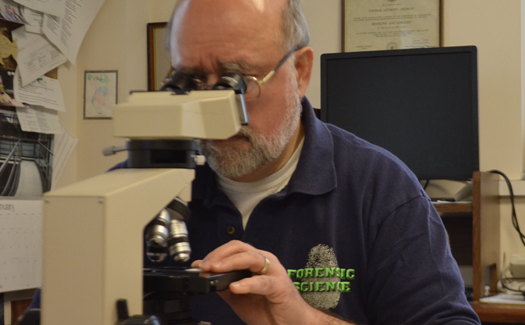Dr. Andrew offers four examples how forensic pathology can offer expert opinion rather than speculation, even when the body has been burned.
 Among the classical mistakes in forensic pathology as outlined by Dr. Alan R. Moritz in his Ward Burdick Award Address presented at the 35th Annual Meeting of the American Society of Clinical Pathologists in 1956 is the following: the “mistake of regarding a mutilated or decomposed body unsuitable for autopsy.” This observation applies equally to burned and even charred bodies and remains relevant today. In fact, Dr. Moritz’s landmark paper, reprinted in the American Journal of Forensic Medicine and Pathology in 1981 should be read once a year by all who practice forensic pathology. The following vignettes provide elegant testimony to the truth of Moritz’s maxim.
Among the classical mistakes in forensic pathology as outlined by Dr. Alan R. Moritz in his Ward Burdick Award Address presented at the 35th Annual Meeting of the American Society of Clinical Pathologists in 1956 is the following: the “mistake of regarding a mutilated or decomposed body unsuitable for autopsy.” This observation applies equally to burned and even charred bodies and remains relevant today. In fact, Dr. Moritz’s landmark paper, reprinted in the American Journal of Forensic Medicine and Pathology in 1981 should be read once a year by all who practice forensic pathology. The following vignettes provide elegant testimony to the truth of Moritz’s maxim.
1. Young Hispanic Male
The partially burned remains of a young Hispanic male were found in a park during the early morning hours. There was a strong odor of accelerant about the body. He was quickly identified and there was early speculation his death was a self-immolation suicide based on his history. Postmortem examination revealed a small caliber gunshot wound of the head which penetrated the brain but did not exit. There was soot in his upper airway and carbon monoxide content in the blood was measured at 42%. Autopsy changed the focus of investigation from suicide to homicide. No gun was recovered from the scene. The victim had been shot then set on fire with the use of an accelerant. He was unconscious and may have appeared dead to his assailant who actually set his victim on fire while he was still alive.
2. 78-Year-Old White Man
The burned body of a 78-year-old white man was recovered from his small apartment after a fire was extinguished. The origin of the fire was his apartment and its source were quickly determined to be markedly overloaded electrical circuits with a maze of extension cords and power strips throughout the apartment. A wrongful death action against the landlord was short-circuited by the autopsy finding of a massive stroke and the complete absence of soot in the upper airway. Carbon monoxide in blood was undetectable. The deceased died of his stroke before the fire erupted. An apparent accidental death was, in fact, natural.
3. Homeless 52-Year-Old White Male
Similarly, the nearly completely charred body of a homeless 52-year-old white male was discovered in his burned-out tent at the fringes of a homeless encampment. Police were faced with rumors of a feud between the deceased and other members of the homeless community. The source of the fire appeared to be a nearby kerosene lantern. Autopsy revealed a transmural myocardial infarction involving nearly the entire anterior wall of the left ventricle stemming from an occluded left main coronary artery. Under the microscope the infarction was 12-18 hours old. There was no soot in the airway and no carbon monoxide detected in postmortem blood. A potential homicide became a natural death.
4. 72-Year-Old Black Woman
The charred remains of a 72-year-old black woman was recovered from her home after a fire engulfing the entire house was extinguished. The fire was clearly a result of arson based on the fire marshal’s scene findings. Autopsy revealed an upper airway free of soot and carbon monoxide was detected in the postmortem blood at 39% Thoughts of rapid death in an accelerant-fueled flash fire were negated by the autopsy findings of trauma of the neck and tongue suggestive of ligature strangulation. A suspect in the case admitted having “choked out” the victim with a thin cord before the fire was set. Tragically, the victim was still alive, either unconscious or feigning death when the fire was set. Her death, a homicide, was due to smoke inhalation and thermal burns with strangulation playing a secondary role.

